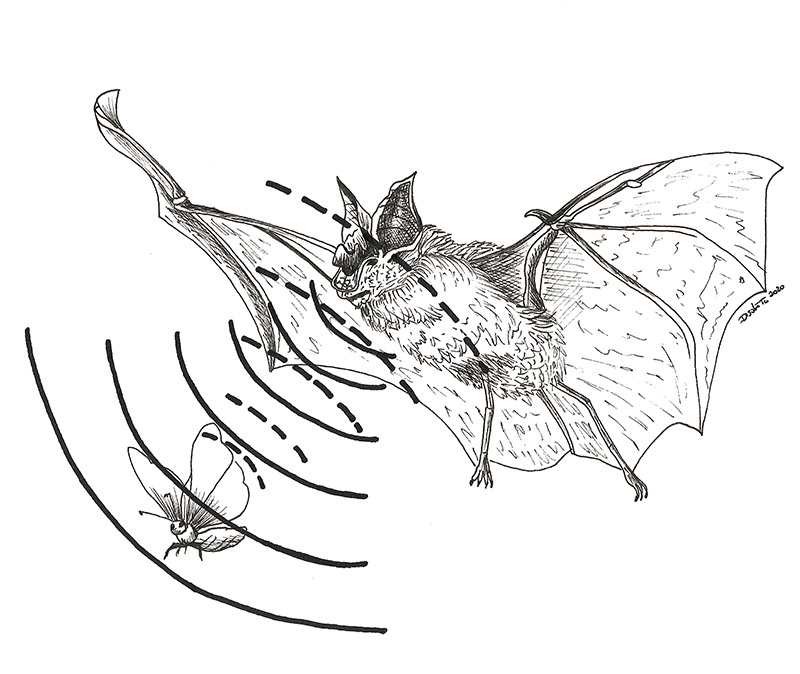Among the many beliefs about bats, one of the most widespread is certainly that they are blind creatures. This is not true, because bats have great sight, but simply do not use (only) this sense to move in the most complete darkness. The adaptation to the night flight has produced the development of a complex system of echolocation, based on the emission and reception of ultrasound.
To build a map of what surrounds them, bats emit ultrasound (from the mouth or nose) that, going to collide with the surfaces, bounce and return in the form of echo, and are perceived by the ears (or nose in some species). Ultrasounds, however, are not only used to find their way, but also to classify the prey, know the shape and size of insects, as well as their speed and direction, in order to capture in flight even a mosquito of a few millimetres!
Chiropterologists, the observers of bats, use an instrument called bat detector to reveal ultrasound. How does it work? The identified ultrasound is converted into sounds perceptible to the human ear and, through their analysis, allows the recognition of many species of Chiroptera. This allows to know the species of bats existing in a specific area.
Chiropterologists have detected that in Europe there are 45 species of Chiroptera, very difficult to detect in most cases. It’s necessary indeed to observe some distinctive characters (some are very small, like teeth), can therefore be made only by expert chiropterologists.
